The Therapy Delusion: Freud’s Cigar, TikTok Neuroses, and the Courage to Grow Up
Why therapy is not an emotional Jacuzzi for the self-indulgent, but a discipline for the brave—and why we’d rather mock it than attempt it.
If you believe in the importance of free speech, subscribe to support uncensored, fearless writing—the more people who pay, the more time I can devote to this. Please subscribe and get at least three pieces /essays per week with open comments. It’s $6 per month and less than USD 4.
I know everyone says Hey, it’s just a cup of coffee (with me, not per day, but just one per month).
But I only ask that when you choose your coffee, please choose mine. Cheers.
Say the word therapy, and a cartoon reels unbidden into the mind: the lachrymose patient draped across the chaise longue, Kleenex strewn about like battlefield shrapnel, while a Freud impersonator puffs his pipe and inquires, “How did your mother dress?” Then, with the gravity of a priest announcing a miracle, he interprets your fondness for Pringles tubes, drainpipes, cigars, and even the humble umbrella stand as unmistakable tributes to the penis. Therapy, at least in this caricature, is less about resolving trauma than about discovering phallic connotations in the plumbing aisle at Home Depot.
Popular culture has embalmed this caricature: therapy as self-indulgent whining, wallowing in childhood grievances, and picking endlessly at psychological scabs in the mistaken belief that bleeding is healing. It is the therapy of Woody Allen films, of every sitcom shrink, of endless complaint without consequence. And it is rubbish. Utter rubbish.
Therapy is not an emotional toilet into which one empties the week’s grievances and flushes. Nor is it a “safe space” for self-pity disguised as self-discovery. When done properly, therapy is structured, rigorous, and unnervingly disciplined. It demands not merely introspection but action; not merely confession but accountability. It requires the one thing in shortest supply in modern culture: courage.
The myth propping up this caricature is catharsis—the delusion that spewing your troubles into the ether is itself curative. Freud’s early disciples believed it; so, alas, do most Hollywood screenwriters. Venting is briefly satisfying, like shaking a bottle of fizzy water and letting it explode. But the mess remains, sticky on the floor, waiting to be mopped. The fizz doesn’t vanish; it merely spreads. Much the same with punching a wall in “therapeutic release”: your rage is undiminished, your hand is broken, and the drywall still needs fixing—a task made all the trickier with a bandaged fist.
Modern therapy, at least in its more evolved forms, has had the sense to abandon this pseudo-religious ritual. Understanding why you feel as you do is step one, not step last. What matters is what you do next. The past cannot be changed; the future still can.
This is where Cognitive Behavioural Therapy (CBT) enters, as the unglamorous workhorse of the field—the “Just the facts, ma’am” of treatment. If therapy were an ideology, CBT would be the plodding pragmatist, not the utopian dreamer. It is not psychoanalytic archaeology but engineering. Identify faulty wiring, fix it, move forward.
CBT begins with the blunt premise that thought governs feeling, and feeling governs behaviour. Alter the thought, and the rest follows. It has nothing to do with dream diaries or mystical symbolism. It is the plumber’s therapy: find the leak, fix it. You will not leave therapy and see a penis everywhere.
Consider the anxious patient. Old-school analysts would rummage in childhood attics looking for dusty phobias. CBT asks instead: what thought triggered the panic just now? Is it rational, or do catastrophising and black-and-white thinking distort it? And how can it be replaced with something saner?
This is not therapy for the faint of heart. CBT sends the socially anxious into conversations with strangers, the obsessive into resisting compulsions, and the fearful into confronting what they dread. It demands sweat, risk, and embarrassment. It requires, in other words, bravery.
Yet therapy remains widely misunderstood. Some dismiss it as self-pity for the fragile. Others dabble and then sneer that it “didn’t work,” the equivalent of visiting a gym once and complaining about the absence of abs.
The fault lies partly with Hollywood and partly with TikTok. Film and television immortalise Freud’s couch. Social media reduces complexity to hashtags and pastel platitudes, pathologising adolescence into an all-you-can-eat buffet of syndromes. Thirty seconds on TikTok can diagnose you with “Big 3 Zodiac Anxiety,” cosmic misalignment dressed up as psychiatry.
Therapy is not passive. It is not an indulgence. It is work—arduous, frustrating, incremental, but transformative for those who persist. It is the discipline of unlearning bad mental habits and replacing them with habits that make life survivable.
This is why therapy is not for the weak but for the strong. It is far easier to deny, to binge, to drown yourself in distraction, to shout slogans and join mobs. It is harder to sit down and say, “I am responsible for what I do next.”
Let us dispense with the caricature. Therapy is not an emotional Jacuzzi for the self-absorbed. It is not a flushing of grievances into the abyss. It is, at its best, a training ground for resilience and a rehearsal for adulthood.
And to those who still scoff, imagining therapy is for navel-gazers and neurotics, the answer is simple: grow up. Therapy is not wallowing; it is climbing. Not weakness, but strength. Not surrender, but resilience.
The rest is Freud’s eternal gift: a world in which every umbrella, sausage, and lamppost groans under the weight of its symbolic manhood.



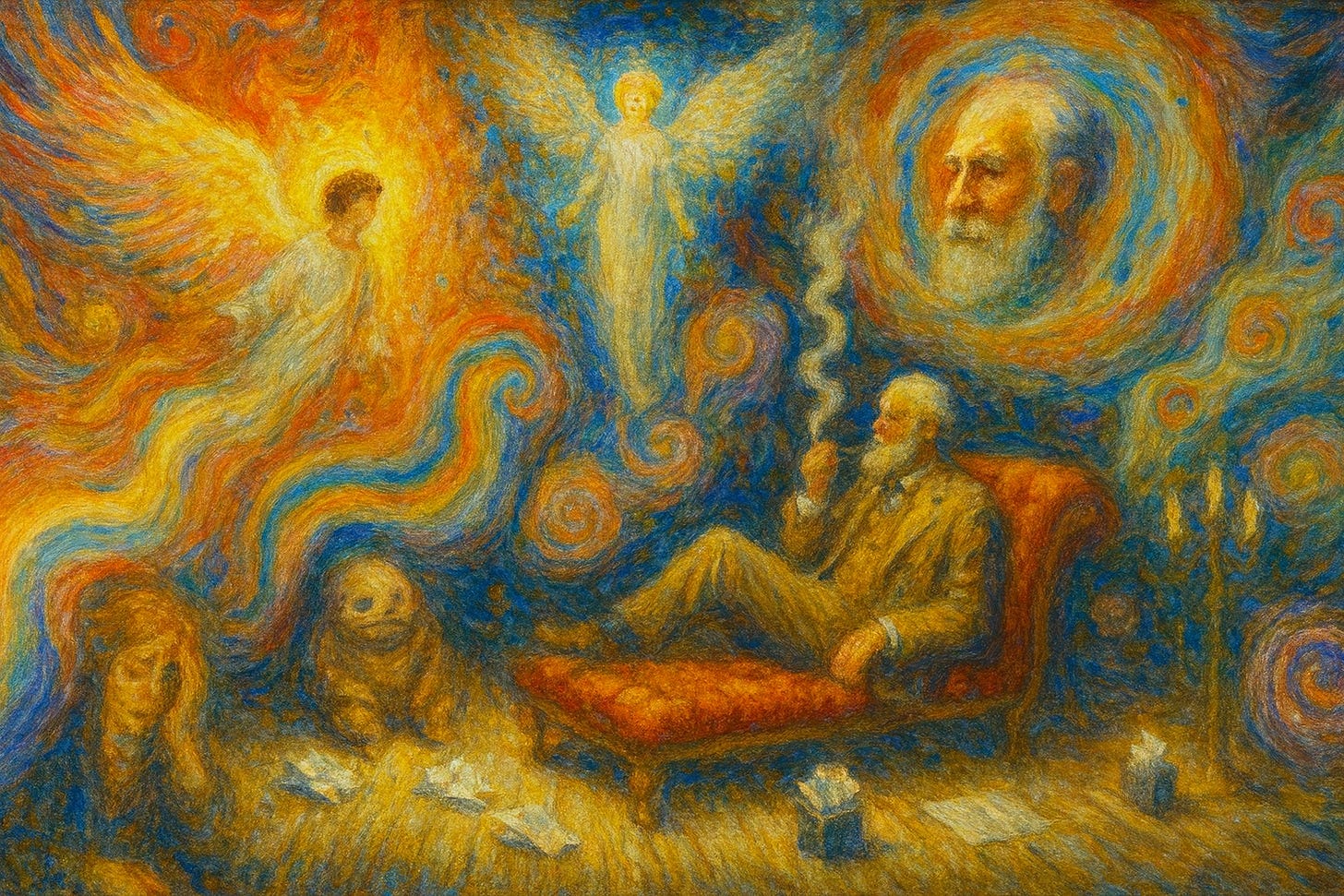
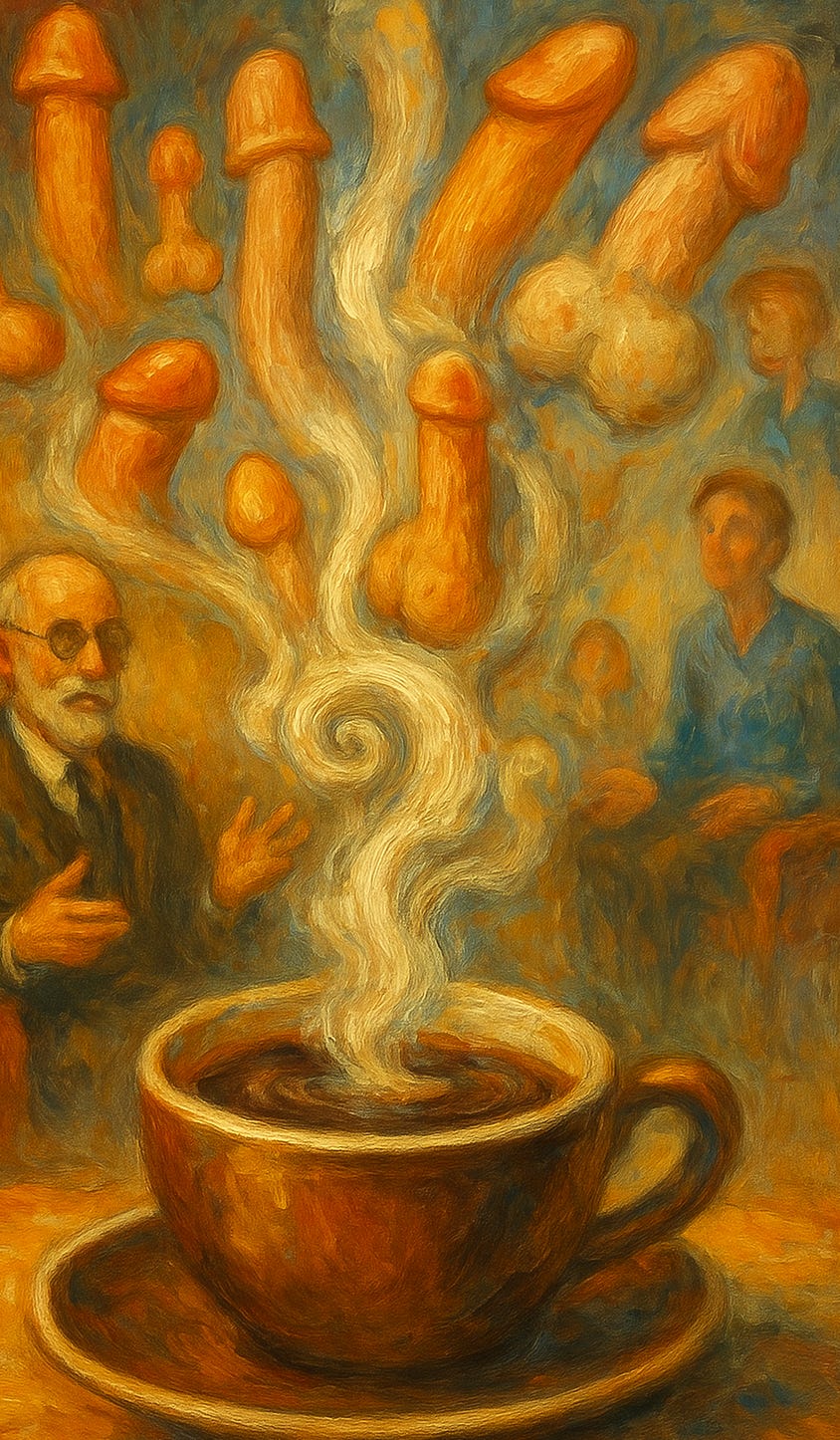
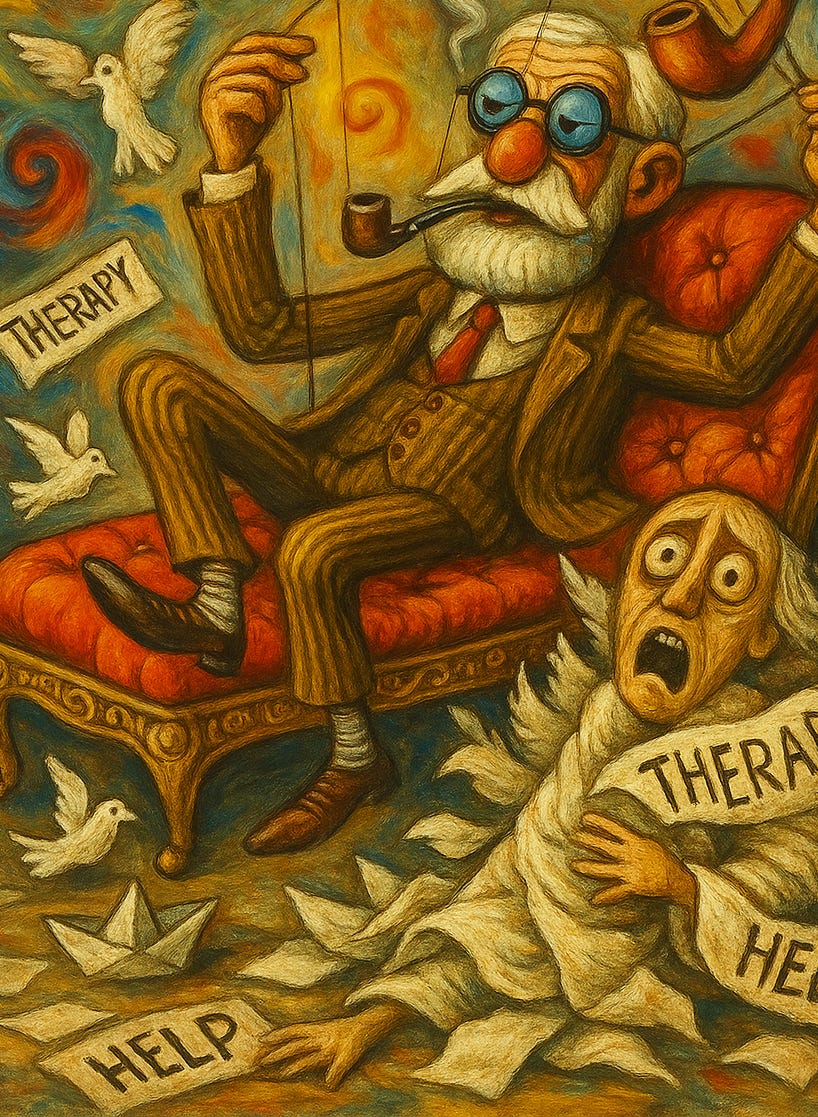
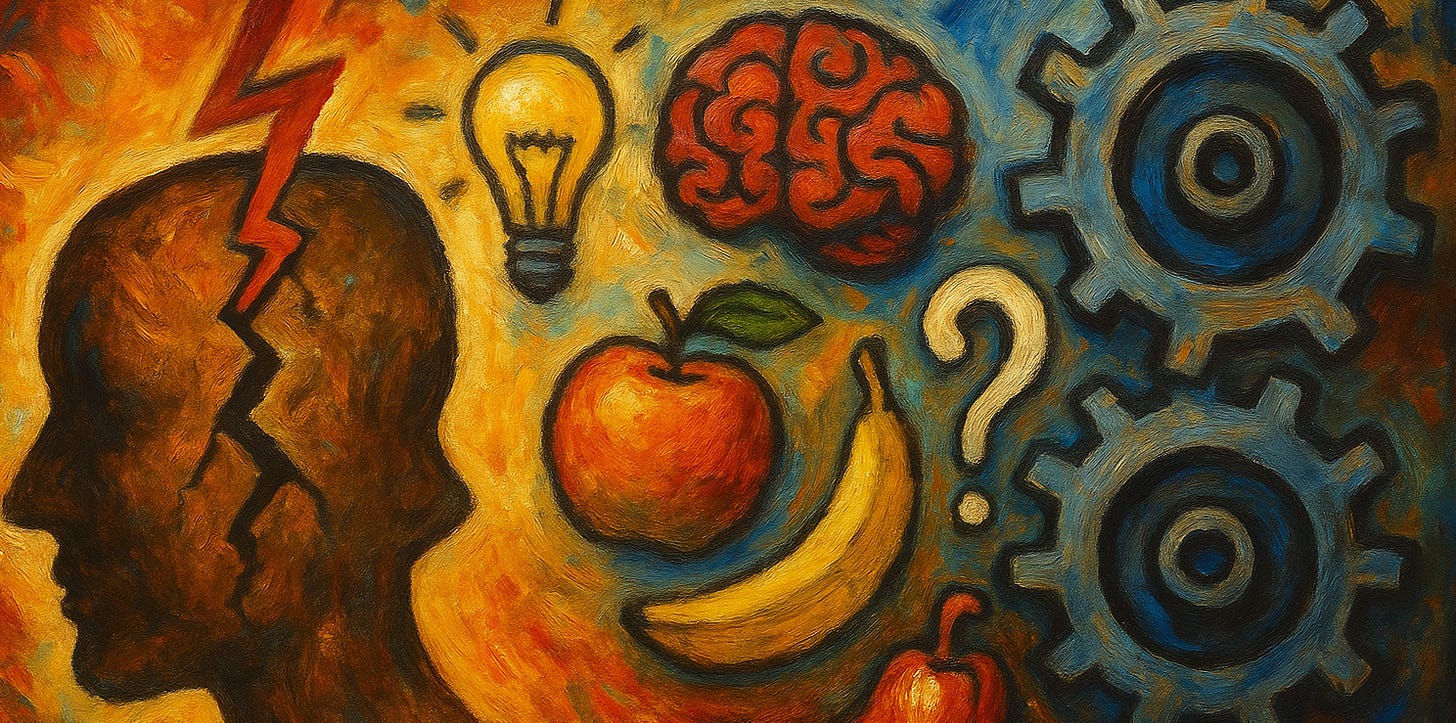
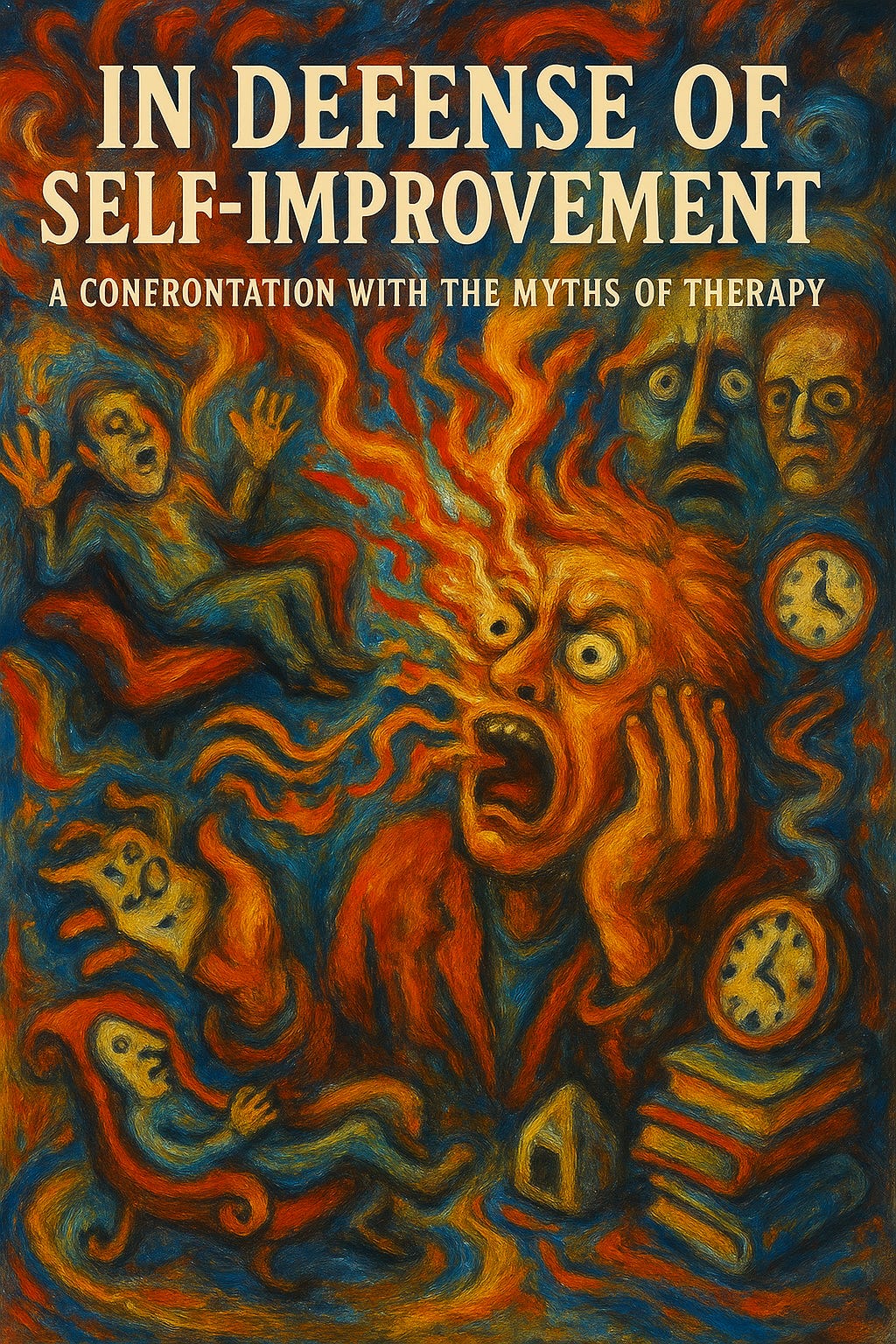

🎯
I don't want to be reminded of things I shouldn't have gone through.
If talking helped, I'd rather talk to a friend, or someone who truly understands the issue from personal experience.
There's no way to fix what went missing in early childhood.